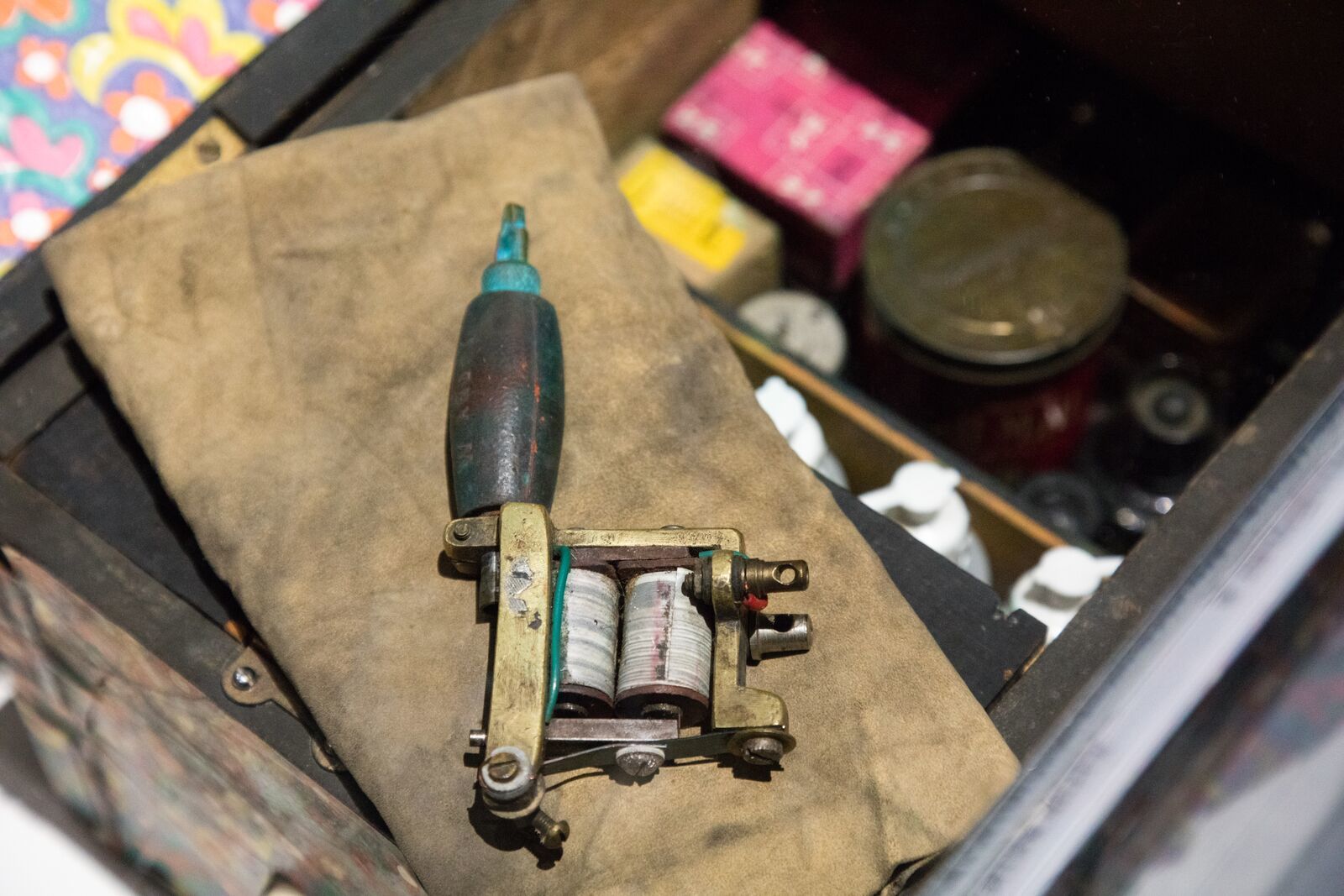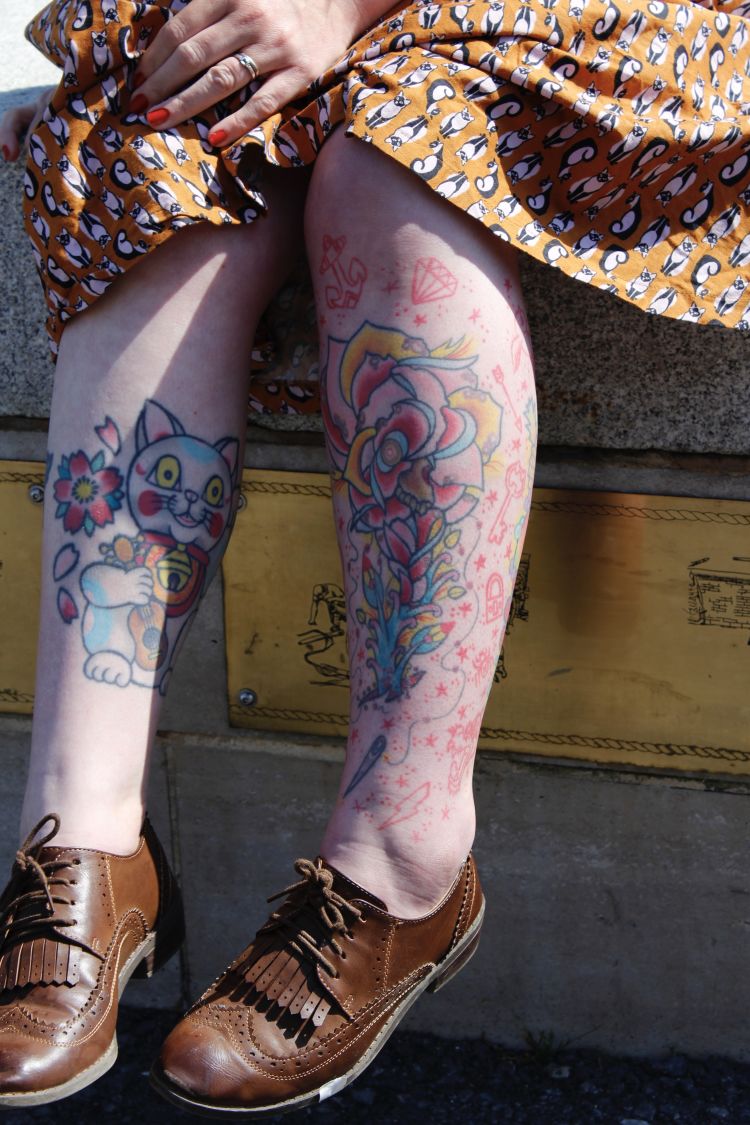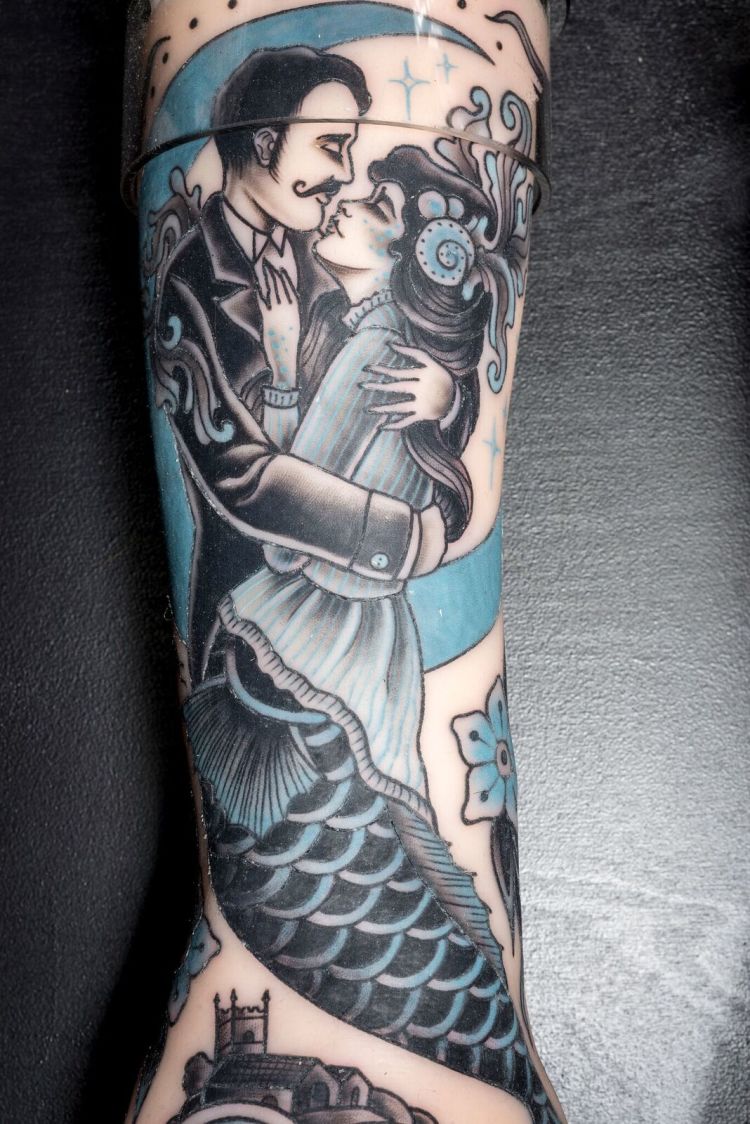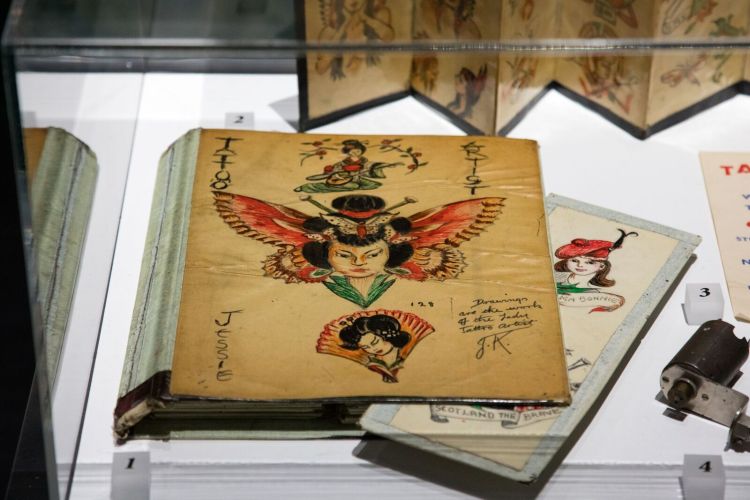Navy Body Art Revealed
It all began 400 years ago when sailors started the modern trend of tattoos…through a not so modern method.

A tattoo enthusiast talks about a new exhibition coming to Portsmouth featuring historic naval body art.
Alice Roberts-Pratt, exhibition curator, takes us on the journey through time of naval tattoos.
‘British sailors would use the hand poking method to tattoo each other, they all had needles and used gun powder as ink. The needles were intended for stitching socks but they got bored while away on ships. They started by engraving boxes and tusks and then moved onto skin.’
‘The trend of tattoos has changed from WW1 to WW2 to postwar tattoos which usually have a darker meaning. We will be featuring tattoos from the past and the present.’
This exhibition was first created by the National Maritime Museum in Cornwall and it’s now making its way to the National Museum of the Royal Navy in Portsmouth’s Historic Dockyard.
‘This exhibition is different as we’ve put a Royal Navy spin on it. This is the first historical tattoo display which is traveling the country’
‘Tattoos can be a personal thing and sometimes are done to remember people, we’ve seen a lot of tattoos from people whose dads were in the navy. People get tattoos just because they like the art and designs.’
A man who moved to the Isle of Wight got a light house tattoo because it represents the light in his life but he also says it shows his protection for his little son.’
‘We’ve heard stories of Henry Hoover tattoos, strangely enough. One man who was a chef from the navy lost a game of tattoo roulette and this was the outcome.’
Lower ranks of sailor would usually have tattoos as they would have a lot of spare time on ships, Royal Navy members who were higher up wouldn’t join in with the trend as they would be looked down on.
The exhibition is hoping to feature more than 1000 tattoos.
Alice goes on to say the 1960s were the most tattooed years and they have a lot of evidence of tattoos from this period.
‘There is an expanding trend of navy tattoos, people are them bringing them back.’
At first, tattoos were all in blue as this is the only colour they had on hand, sailors then reached China and Japan and would comeback with coloured tattoos which took tattoos to another level.
‘Swallows and anchors were particularly popular tattoos, one swallow represented 5000 nautical miles, they also represented their coming home. Anchor tattoos represented hope, salvation and composure.’
A rope tattoo, especially around the wrist, indicates the wearer was a deckhand on a ship. The North Star was traditionally used by sailors for navigation, a tattoo of a star usually indicates that the wearer will find their way home.
‘Tattoos are a personal interest of mine, a lot of my tattoos for personal reasons. Growing up my mum had lots of tattoos and I always really wanted to get one.’
‘I love the 1930’s vintage tattoo collections, especially the dancing ones.’
‘We plan on live tattooing on HMS Warrior as part of the exhibition and my ambition is to be the first to get a tattoo on board the battleship.’
‘I would like to get a vintage piece by Jessie Knight from the 40’s of a blonde lady with a dark haired bloke next to her because it reminds me of my husband and I.’
Jessie Knight is a famous pioneering female tattoo artist,the exhibition will be featuring some of her flash designs and tattoo machinery.
George Burchett, who is also known as the King of Tattooists will be heavily featured in this exhibition. He has tattooed a lot of royalty including King George V as well as King of Spain and Denmark.
‘The trend of tattoos has changed from WW1 to WW2 to post war tattoos which usually have a darker meaning. We will be featuring tattoos from the past and the present.’
Post war tattoos tend to have more somber meanings; they often are used to remember people who took part in the war.
The exhibition will be featuring the 100 Hands Project which is a map of British tattoos on 100 sculpture hands done by tattooists all over the country.
The East Sussex born, George Burchett, who is also known as the King of Tattooists will be heavily featured in this exhibition. He has tattooed a lot of royalty including King George V as well as King of Spain and Denmark. He was also the one to invent the tattooing of eyebrows and lips.
The display will open on the 30th of June at National Museum of the Royal Navy in the Portsmouth Historic Dockyard. The exhibition shows how people from all areas have always been tattooed.
Naval tattoo submissions can be sent to: submissions can be sent to: tattoo@nmrn.org.uk

Aimee Cornwell installation Picture: Paul Abbitt

Alice Roberts- Pratt tattoos Picture: Murray Jacobsen

100 Hands Project Picture: Paul Abbitt

Jessie Knight detail Picture: Luke Hayes


